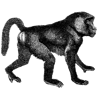Scrum teams are cross functional in nature. In addition to having a development team with the necessary capabilities in design and QA, there are also two scrum specific roles that are integral to all scrum teams.
These are the product owner and the scrum master.
These two roles are responsible for the leadership and direction that the scrum team takes and how successful the eventual scrum implementation is. While both these roles assume leadership of the team at different stages of scrum - both of them require a different skill set and some of these skills are often complementary to each other.
The Scrum Master
The scrum master is responsible for managing the overall sprint process. He serves as a coach and facilitator for the development team. Once the sprint planning meeting is done, the scrum master takes responsibility for leading the team. He is usually the one who is leading the daily standup meetings. It is the scrum master’s role to handle disruptions and help the team remove blockers.
The scrum master is also usually very knowledgeable about the scrum process and should serve as the go to reference within the team on any process related queries.
The scrum master skill set
The skills that a scrum master require are:
- Leadership and ability to take responsibility are very important for the scrum master. He is the lead member of the squad during the sprint and has to ensure that the day to day sprint goals are being met.
- The scrum master needs to know the scrum process inside-out and needs to guide the team on clearing blockers and hitting targets. Thus a clear understanding of the sprint process is a must for any scrum master.
- The ability to partner with the product owner is also a very important skill that needs to be mastered. This is because the scrum master and the product owner are the leaders of the sprint squads who assume different responsibilities at different times. It is essential that they are on the same page in order to translate product specifications into successful sprints.
- The ability to coach other members of the team is also key to the success of a scrum master. This is also important because teammates who are new to the scrum methodology will require guidance and coaching.
- Lastly, the scrum master needs to be able to reflect on sprints and make key suggestions to improve the process. This usually happens in the sprint retrospective meeting. A good scrum master has the ability to improve the team’s performance with every sprint.
The Product Owner
The product owner is responsible for owning and managing the product backlog. In many cases, he is also responsible for the overall success of the feature being developed. He also plays an important role in being the bridge between the management, the product, the customers and the development team.
The product owner’s primary role is translating the product vision into actionable items on the product backlog. He also has to groom and maintain the backlog to keep it in good shape for sprint planning meetings. The product owner’s role during sprint planning is to choose the right items to be included in the sprint and help the team set targets for the sprint demo.
The product owner skill set
The skills that product owners require are
- Communication skills are of paramount importance as one of the responsibilities of the product owner is to serve as the liaison between the senior management and the development team tasked with building features for the product. More importantly, the product owner serves as the primary means of communication between non technical members of staff and the engineers.
- Product Understanding is another non negotiable skill that product owners need in order to successfully do their jobs. They serve as the point person for all product backlog related queries that the development team may have during the planning or sprint phases.
- The ability to delegate is also a desirable quality as product owners take a backseat to the scrum master once the sprint begins.
- Prioritisation is probably the most important skill that a product owner needs. The eventual outcome of any scrum implementation depends heavily on the product owners ability to prioritise correctly and have the development team work on the right user stories.
Comparing and contrasting the two roles
Product Owner
|
Scrum Master
|
|
Responsible for the product backlog and prioritising and choosing what to work on.
|
Responsible for leading the team during the sprint and hitting targets.
|
|
The product owner assumes leadership of the team before and in-between sprints.
|
The scrum master leads the development team during the sprints.
|
|
Product owners usually have expertise in the product being built. This means that they can take inputs from customers, senior management and the engineering teams to prioritise and drive the product in the correct direction.
|
Scrum masters are usually process experts and their leadership skills are essential during the sprint stage. They guide the team, remove blockers and prevent the development team from getting distracted during the sprint.
|
|
Backlog grooming is an important part of the product owner’s role. It is his responsibility to work with various stakeholders and have a well pruned backlog ready for sprint planning.
|
The scrum master works on understanding processes and impediments during the sprint. His job is to refine and improve processes to make sprints more efficient.
|
|
Works together with the development team and the scrum master during the sprint planning meeting to plan and move items into the sprint backlog.
|
The scrum master’s role in the sprint planning meeting is to add inputs about team capacity, velocity and help the product owner select stories optimally.
|
|
During the sprint, the product owner usually plays a very passive role and helps the team when they need clarity about user stories or bugs. Product owners should not micromanage and usually work with other stakeholders during the sprint phase.
|
The scrum master oversees the sprint and acts as the team’s coach during the sprint. He usually monitors progress, conducts daily standups and prevents the team from external interferences during the duration of the sprint.
|
|
The product owner is usually present in the sprint retrospective meeting to understand how the team fared and what changes need to be made from a product planning perspective.
|
The scrum master’s role during the retrospective is more prescriptive in nature as he has first hand knowledge of how the sprint went and what process changes are needed for improved outcomes.
|
To conclude
Both the scrum master and the product owner own different aspects of the scrum process and lead the team at different times. The outcome of scrum not only depends on their individual abilities and skill sets but also their ability to work together as a team.
The product owner represents the development team to the customers (in the form of the product itself) and the senior management (in the form of sprint outcomes) while the scrum master serves as a leader within the team.
As both the product owner and scrum master get a better understanding of their responsibilities and better at their roles, they also must get a better understanding of how their roles overlap with each other and become comfortable with collaborative leadership. This is essential as the best sprint teams almost always have product owners and scrum masters with the experience of working with each other over a period of time.






Oldest comments (0)